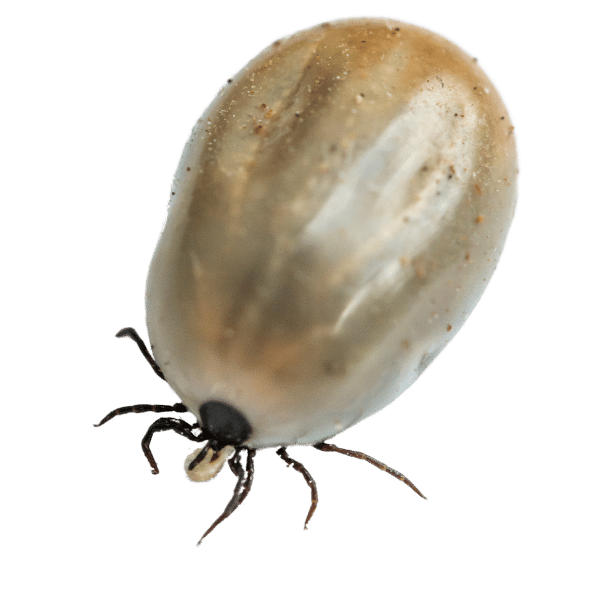Intro to the Insect:
Ticks are parasitic arachnids that pose serious health risks to both humans and animals in North Alabama. Common in wooded areas, tall grass, and underbrush, ticks attach to hosts to feed on blood, potentially transmitting diseases such as Lyme disease and Rocky Mountain spotted fever. North Alabama’s warm climate allows ticks to remain active for most of the year, with peak activity in late spring and early summer. Their ability to hide in vegetation and latch onto unsuspecting hosts makes them a significant concern for outdoor enthusiasts and pet owners alike.
Which Ones Are Common in My Area and How Can I Identify Them?
The American dog tick (Dermacentor variabilis) and the black-legged tick (Ixodes scapularis) are the most common species in North Alabama. Characteristics include:
- Size: Adults range from 1/8 to 1/4 inch long.
- Color: Brown bodies with darker markings, often resembling a shield.
- Behavior: They climb vegetation and wait to latch onto passing hosts.
Ticks are most commonly found on pets, humans, and wildlife after spending time in wooded or grassy areas.
How Did I Get the Insect?
Ticks are introduced into your yard or home through several pathways:
- Wildlife: Deer, raccoons, and other animals bring ticks into residential areas.
- Pets: Cats and dogs pick up ticks while exploring grassy or wooded areas.
- Environment: Overgrown vegetation creates ideal habitats for ticks to thrive.
Ticks are especially prevalent in areas with dense underbrush or poorly maintained landscapes.

What Effects Does This Have on My Lawn or Outdoor Space?
Ticks are a serious health hazard due to their ability to transmit diseases. Their presence leads to:
- Health Risks: Diseases like Lyme disease, anaplasmosis, and Rocky Mountain spotted fever.
- Pet Discomfort: Pets may suffer irritation or illness from tick bites.
- Reduced Outdoor Use: Ticks make lawns and outdoor areas less inviting for recreation.
Controlling ticks is essential for protecting your family’s and pets’ health.
How Long Do They Live?
Ticks have a long lifecycle, often lasting 2–3 years:
- Eggs hatch into larvae, which feed on small animals.
- Nymphs feed on larger hosts like humans and pets.
- Adults reproduce and lay eggs, continuing the cycle.
Ticks can survive for months without feeding, making them resilient and difficult to eliminate.
How Do I Prevent Them?
Effective prevention involves reducing tick habitats and treating high-risk areas. Steps include:
- Maintain Landscaping: Keep grass mowed and remove leaf litter or brush.
- Create Barriers: Use gravel or mulch to separate wooded areas from lawns.
- Inspect Pets: Regularly check pets for ticks after they’ve been outdoors.
Preventative measures reduce the likelihood of ticks in your yard and on your pets.
How Guardian South Helps:
We provide comprehensive tick control treatments for your yard, targeting high-risk areas and ensuring your outdoor space is safe. Our pet-safe solutions protect your family and pets while effectively reducing tick populations.

